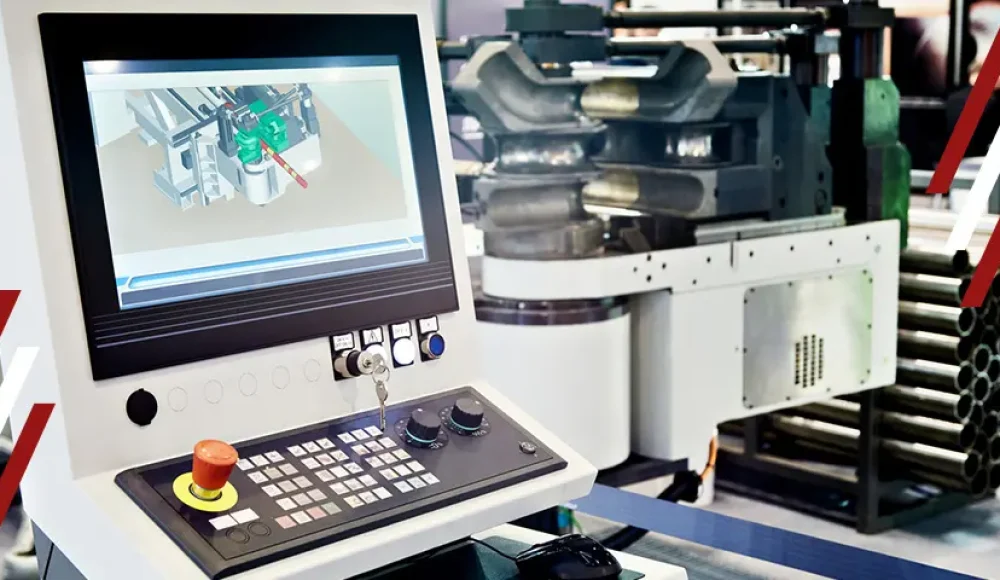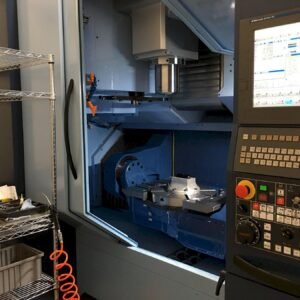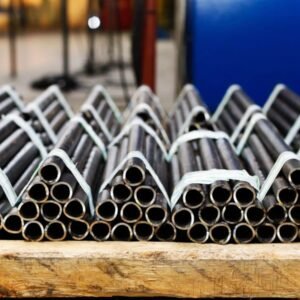In today’s fast-paced, 高精度の製造 環境, コンピュータ支援製造 (カム) plays a crucial role in turning digital designs into real-world products with speed and accuracy. From aerospace to automotive and medical devices, CAM enables automation, optimizes workflows, and reduces production errors.
This article explores everything you need to know about CAM—what it is, 使い方, its industry uses, 主な利点, essential tools, integration with other systems, and what lies ahead.
コンピューター支援の製造とは何ですか?
コンピュータ支援製造 (カム) is the use of software to control machine tools and automate manufacturing processes. CAM software translates 2D or 3D コンピュータ支援設計 (CAD) models into machine instructions (typically G-code) used by CNCマシン, 3D printers, EDM systems, もっと.
Key Functions of CAM:
Generating toolpaths for milling, 旋回, 掘削, and cutting.
Simulating machining operations.
Controlling multi-axis CNC machines.
Optimizing material usage and cycle time.
A Brief History of CAM
1950s: Birth of 数値制御 (ノースカロライナ州)—machines controlled by punched tape.
1960s: の紹介 コンピュータ数値制御 (CNC) systems.
1970s: First generation of CAD/CAM integration for automotive and aerospace.
1980s–1990s: Rapid development of PC-based CAM systems.
2000s – present: Cloud-based CAM, 5-軸加工, and real-time monitoring become mainstream.
How Does CAM Work?
Start with a CAD Model
あなた (or your engineer) design the part using CAD software. It’s like sketching something in 3D on your computer.
Import the Design into CAM Software
Once your part is designed, you open that file in a CAM program like Mastercam or Fusion 360. This is where the real planning begins.
Set Up the Machining Strategy
You tell the software どうやって to make the part. That includes picking tools (like drill bits or mills), choosing how fast they should move, and deciding where they should cut.
Generate Toolpaths
The CAM software draws little “roads” (called toolpaths) that show the machine exactly where to go and what to do — cutting, 掘削, 彫刻, 等.
Convert to G-code
CAM then turns all those toolpaths into a special language called Gコード — it’s like the machine’s step-by-step instructions.
Send the Code to the Machine
You load the G-code into a CNC machine. It reads those instructions and starts cutting your part out of metal, プラスチック, or whatever material you’re using.
Let the Machine Do Its Thing
The machine does the work: spinning, 切断, moving, and shaping — all automatically. You just watch, listen, and step in if anything goes wrong.
Industry Applications of CAM
CAM is applied across nearly all manufacturing sectors:
| 業界 | Common CAM Applications |
| 自動車 | エンジンブロック, 金型, トランスミッションハウジング |
| 航空宇宙 | タービンブレード, airframe ribs, structural brackets |
| 医学 | 整形外科インプラント, 手術器具, 歯科装置 |
| エレクトロニクス | PCB boards, ヒートシンク, エンクロージャ |
| エネルギー | Wind turbine hubs, nuclear casings, pump components |
| 消費者 | Plastic enclosures, ツール, おもちゃ |
Benefits of CAM for Manufacturers
✅ 1. It Saves Tons of Time
With CAM, machines follow a computer program instead of being manually controlled. That means you can go from design to production super fast — no more stopping to measure every little cut. CAM helps things move quicker, which means more parts made in less time.
✅ 2. It Makes Things Super Accurate
Humans make mistakes. Computers? Not so much (as long as the program is right!). CAM machines follow exact instructions, so every part is consistent and precise. That’s huge when you’re making thousands of the same thing — or even just one part with tight tolerances.
✅ 3. It Reduces Waste
Nobody wants to throw away expensive materials. CAM systems calculate the best way to cut and shape each piece, so you waste less metal, プラスチック, または他の素材. That’s good for your budget そして the planet.
✅ 4. It’s Easier to Make Changes
Need to tweak your part design? 問題ない. Just update the CAD file, re-run the CAM software, and you’re good to go. No need to rebuild jigs, reset machines, or start from scratch. CAM makes switching between jobs a whole lot smoother.
✅ 5. It Works with Lots of Different Machines
Whether you’re running CNC mills, 旋盤, ルーター, or even 3D printers, CAM can handle it. It speaks the language of many machines — all from the same digital file.
✅ 6. It’s Safer for Workers
Since CAM automates the cutting and shaping, operators don’t have to stand right next to moving parts all day. That means fewer chances for accidents, injuries, or fatigue.
✅ 7. It Boosts Productivity
With faster setup times, less manual work, そして間違いが少ない, manufacturers can get more done with the same equipment. That’s better output, better profits, and a lot less stress.
✅ 8. It’s Great for Complex Parts
Got a tricky design with curves, 穴, or unusual shapes? CAM is built for that. It makes it easier to create parts that would be almost impossible (or painfully slow) to do by hand.
Most Popular CAM Software Tools
| ソフトウェア | 主な特長 |
| Mastercam | Industry standard for milling, 旋回, and 5-axis |
| 融合 360 | Cloud-based CAD/CAM, ideal for startups |
| SolidCAM | Fully integrated with SolidWorks |
| PowerMill | High-speed machining for molds and aerospace |
| GibbsCAM | Intuitive interface for lathes and multi-tasking |
| NX CAM | Enterprise-level platform by Siemens |
Skills Required for CAM
To be proficient in CAM, an operator or engineer should understand:
CAD modeling and file preparation
CNC machine setup and operation
Tool selection and feeds/speeds
G-code interpretation
Simulation and verification of toolpaths
Troubleshooting and optimizing processes
CADからCAMワークフロー: Why It’s Crucial
💡 First, What is CAD and CAM?
CAD (コンピュータ支援設計): This is where you design the part — like drawing a 3D model of a gear, phone case, or engine part on your computer.
カム (コンピュータ支援製造): This takes your digital design and turns it into instructions for machines to follow — basically, it tells the machine how to cut, ドリル, or shape your part.
📌 Why is This Workflow So Important?
✅ 1. It’s Like Going from Blueprint to Action Plan
Think of CAD as the blueprint, and CAM as the step-by-step action plan. Without CAD, there’s no design. Without CAM, the machine doesn’t know what to do. 一緒に, they turn your idea into a physical product — quickly and accurately.
✅ 2. It Saves Tons of Time
You don’t have to manually re-enter design details into the machine. Once your CAD model is done, you can import it straight into CAM software. That’s a huge time-saver — and way less chance for human error.
✅ 3. It Keeps Everything Consistent
Ever tried to make 100 identical parts by hand? Not easy. But with a CAD to CAM system, the machine follows the same exact steps every time, so every piece comes out just right.
✅ 4. It Makes Last-Minute Changes Way Easier
Changed your mind about a hole size or shape? 問題ない. Just tweak the CAD file, regenerate the CAM instructions, and you’re good to go. No starting over from scratch.
✅ 5. It Helps You Work Smarter, Not Harder
The CAD to CAM workflow is super efficient. It helps you plan ahead — choosing the right tools, 速度, and cutting paths before the job even starts. それはより少ない間違いを意味します, better surface finish, and less material waste.
CAM vs. CNC vs. CAE: 違いは何ですか?
| 学期 | 説明 |
| カム | Turns CAD into machine instructions |
| CNC | Refers to the machine tool that reads G-code |
| CAE | Uses simulation to test designs for stress, 熱, 等. |
Think of CAD as the idea, CAM as the plan, CNC as the action, and CAE as the safety check.
Future Trends in CAM
🤖 AI-Powered CAM: Automated optimization of toolpaths and strategies.
☁☁️ Cloud-Based Platforms: Real-time collaboration and scalability.
🧠 予測メンテナンス: Using sensor data to reduce downtime.
🖨 Hybrid CAM (添加剤 + 減算): Combine 3D printing with milling.
🔄 Closed-Loop Feedback: Real-time adjustments during machining.
結論
Computer-Aided Manufacturing is more than just software—it’s a transformational tool reshaping the way modern manufacturing operates. CAM allows for faster production, lower waste, より高い精度, and greater adaptability.
As industries continue to evolve and digitize, CAM will play an increasingly critical role in helping manufacturers meet demand for complex parts, よりタイトな許容範囲, and sustainable production.



